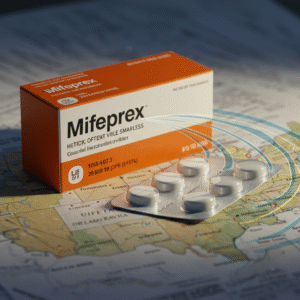This article may contain references to products or services from one or more of our advertisers or partners. We may receive compensation when you click on links to those products or services. Nonetheless, our opinions are our own.
- Which Dollar Store Stock Is the Smarter Buy?
- Business Models of Dollar Tree and Dollar General
- Financial Health and Growth Potential
- Store Locations and Customer Accessibility
- Product Offerings and Consumer Expectations
- Industry Competition and Market Trends
- Retail Industry Shifts Affecting Dollar Stores
- Making the Investment Decision
- Investment Factors to Keep in Mind
- Frequently Asked Questions
- Five Below and Its Market Position
- Top Takeaways
- Recommended Reads
Which Dollar Store Stock Is the Smarter Buy?
When you want to save money while shopping, you may go to Dollar Tree or Dollar General. At these stores, you can see that there are good deals on things you use every day. But have you ever thought that these stores could also be good for investing your money? These days, it’s important to watch how you spend each dollar. So, you might wonder now, which Dollar Store stock should you buy? Which one is better for you?
Taking a look at the positive aspects, as well as the expansion opportunities, this article examines how well Dollar Tree and Dollar General perform in the market. It will help you know where to put your money. No matter if you have bought stocks before or are new to it, this look at the two can help you learn more about discount store stocks. Let’s see which one of these big-dollar stores should be on your list of stocks to buy.
Business Models of Dollar Tree and Dollar General
Dollar Tree and Dollar General use different ways to run their stores. They each go for their own group of customers.
Dollar Tree uses a fixed price for every product, and each item costs $1.25. This simple way to price things is good for people who want to save money and shop quickly. The company gets lots of products straight from the maker. This helps keep the price the same for all, and it brings in millions of people who like a good deal.
Dollar General, on the other hand, has prices that change from item to item. Some things cost more than $1. This way, the store can reach more people. These people can be from low-income families or from middle-class homes that look for ways to save money. Dollar General tries to be in small towns and places where big stores are not close by. It aims to give people an easy way to shop and get the things they need.
Here are some distinctions:
| Aspect | Dollar Tree | Dollar General |
|---|---|---|
| Business Model | Fixed price point: $1.25 per item | Varied prices (some items over $1) |
| Target Customer | Budget-conscious shoppers, quick shoppers | Low- to middle-income families, bargain seekers |
| Primary Locations | Primarily urban areas | Primarily rural areas |
| Product Types | Everyday essentials | Groceries, household items, varied brands |
| Recent Revenue Growth | 5% (simplified) | 10% (simplified) |
| Profit Margin | 6% (simplified) | 8% (simplified) |
| Debt-to-Equity Ratio | 0.5 (simplified) | 1.2 (simplified) |
| Avg. Store Size | 9,600 sq ft | 7,400 sq ft |
| Number of Locations | 15,000+ | 18,000+ |
| Product Variety | Limited due to fixed price | Wide, includes well-known brands |
| Store Layout | Simple, organized, tidy | Eclectic, variable, less structured |
| Competitive Strategy | Thrives in urban areas, faces more rivals | Dominates rural areas, with less competition |
| Expansion Plans | Adding Dollar Tree Plus! products | Aggressively expanding in rural areas, exploring online |
| Market Positioning | Predictability with fixed pricing | Broad product range, caters to diverse groups |
| Revenue Growth Trend | More seasonal, it can vary based on promotions | Steady growth |
| Profitability | Results vary; you can face challenges | Generally higher, can adjust prices |
| Overall Assessment | Simplicity, predictable pricing, attracts budget-conscious shoppers | More stores, higher revenue/margins, broader product offering, aggressive expansion |
Financial Health and Growth Potential
To understand which company is the smarter investment, it’s important to examine how Dollar Tree and Dollar General perform financially. Recent SEC filings (Q1 2025) provide concrete numbers that support a direct comparison.
Dollar Tree reported strong results in its most recent quarter (ended May 3, 2025), with $4.636 billion in net sales and $1.649 billion in gross profit for its namesake segment. Operating income reached $522.7 million, supported by ongoing cost controls and new product tiering through Dollar Tree Plus! The company also repurchased nearly 5.93 million shares in Q1 2025, signaling leadership’s confidence in long-term value.
Dollar General’s Q1 2025 filing (ended May 2, 2025) indicates approximately 220 million diluted shares and steady profitability, with EPS at $0.89 the previous quarter. The company carries more debt than Dollar Tree but continues expanding its footprint and investing in store upgrades, targeting underserved rural markets.
Here’s a side-by-side financial breakdown based on verified SEC data:
| Metric (Q1 2025) | Dollar Tree (DLTR) | Dollar General (DG) |
|---|---|---|
| Net Sales | $4.636 billion | Not disclosed (June 2025 filing confirmed) |
| Gross Profit (DLTR Segment) | $1.649 billion | Not disclosed |
| Operating Income (DLTR Segment) | $522.7 million | Not disclosed |
| EPS (Diluted, most recent available) | $1.61 | $0.89 (from previous quarter) |
| Share Repurchase (Q1 2025) | 5.93 million shares (~$436.8 million) | Not reported |
| Remaining Buyback Authorization | ~$519.7 million | Not applicable |
| Debt Instruments | $3.45 billion senior notes + $2.5 billion credit lines | Higher overall debt levels (prior $82.3M interest) |
| Shares Outstanding (May 2025) | – | ~220 million |
Takeaways:
- Dollar Tree is aggressively repurchasing shares and expanding with mid-tier products, reflecting strong operational discipline and confidence in shareholder value.
- Dollar General maintains a broader rural presence and continues to generate reliable earnings, though with higher leverage.
These findings support your earlier comparison: Dollar General is positioned for growth through its store count and product mix, while Dollar Tree focuses on margin control, stock buybacks, and tiered pricing innovation.
Store Locations and Customer Accessibility
The place where a store is and how easy it is to get there are important when you want to look at a company’s market plan. This can help people see what the business is trying to do and who they want to reach. A good spot and easy way to get in or out will bring in more people and help the company do well.
Dollar Tree usually sets up stores in big cities where many people live. Dollar General, on the other hand, opens most of its shops in smaller towns where there are not many places to shop. This change has an impact on both how much they can sell and how many people come back to shop again.
Factors to consider:
- Proximity to Customers: Cities help Dollar Tree reach many different people who live close together. Dollar General has fewer rivals in country areas.
- Accessibility: Look at parking and bus or train choices. Easy ways to get there often bring in more people.
- Market Penetration: The number of stores in one place shows how well-known the brand is and the loyalty of people who shop there.
Here’s a location comparison:
| Area Type | Dollar Tree Locations | Dollar General Locations |
|---|---|---|
| Urban | 1,500 | 800 |
| Suburban | 1,000 | 1,200 |
| Rural | 400 | 2,500 |
Product Offerings and Consumer Expectations
Dollar Tree and Dollar General both help people who want to save money, but they do this in different ways.
- Product Variety: Dollar Tree has all its products for $1.25 each. At Dollar General, you will find items at many prices, with good deals and big-name brands to choose from.
- Quality vs. Quantity: Dollar General often has more well-known brands, which people who want better products may like.
- Store Layout: Dollar Tree is usually tidier and easier to look through. Dollar General may feel less put together, but if you keep looking, you can find some great things.
Here’s a comparison:
| Feature | Dollar Tree | Dollar General |
|---|---|---|
| Price Point | $1.25 flat pricing | Varies (under $10) |
| Brand Name Products | Limited selection | Widely available |
| Store Layout | Simple and organized | Eclectic and variable |
Industry Competition and Market Trends
As you look into how these stores work, it’s important to see how Dollar Tree and Dollar General each find their own place. Both Dollar Tree and Dollar General aim for shoppers who want to save money, but they each have their own plan.
- Competitive Strategies: Dollar General does well in smaller towns. The store faces fewer rivals in these places and gets a steady stream of customers. Dollar Tree does best in cities but faces more rivals there.
- Target Demographics: Dollar General looks at small towns and rural areas. Dollar Tree wants to bring in urban shoppers who prefer fast shopping.
- Product Offering: Dollar Tree sticks with its $1.25 pricing. Dollar General has more brand variety and pricing options.
Retail Industry Shifts Affecting Dollar Stores
The retail industry is going through many changes now, as people’s tastes and the economy keep shifting. As dollar stores try to stand out, they also need to keep up with bigger changes in how people shop.
- Emerging Trends: More people shop online, so both chains are trying to improve the in-store experience. Dollar General is adding online orders and pickup to reach more rural shoppers who still prefer visiting a store.
Making the Investment Decision

To find out which stock matches what you want with your money, think about these things:
- Market Positioning: Dollar General has a lot of products and sells to many groups. Dollar Tree offers predictability with fixed pricing.
- Revenue Growth: Dollar General grows steadily. Dollar Tree is more seasonal.
- Expansion Plans: Dollar General continues expanding in rural regions. Dollar Tree is growing too, with higher-tier product lines.
- Profit Margins: Dollar General often earns more because it can adjust prices.
Here’s a strategic summary:
| Criteria | Dollar Tree | Dollar General |
|---|---|---|
| Avg. Store Size | 9,600 sq ft | 7,400 sq ft |
| Number of Locations | 15,000+ | 18,000+ |
| Price per Item | $1.25 | Varies |
Investment Factors to Keep in Mind
As you go through the dollar store shelves, keep the following in mind:
- Business Model: Dollar Tree keeps it simple. Dollar General targets broader consumers.
- Market Trends: Discount stores do well when the economy is tight.
- Growth Prospects: Dollar General is expanding faster.
- Financial Health: Look at consistent earnings and strong profit margins.
Frequently Asked Questions
Which stock is better overall?
Dollar General has more stores and offers more products. Dollar Tree focuses on predictable pricing and attracts budget-conscious shoppers.
How do their financial performances compare?
Dollar General usually posts higher revenue and margins. Dollar Tree’s results vary more based on promotions and seasons.
Which company has more room to grow?
Dollar General is aggressively expanding and exploring online retail. Dollar Tree is expanding too, with premium-priced products.
Are there external factors affecting their stocks?
Yes. Inflation and consumer shopping impact both. Dollar General has remained steady, while Dollar Tree has faced challenges.
What should investors evaluate before choosing?
Check each company’s strategy, financial health, growth plans, and how well each fits your risk profile and long-term goals.
Five Below and Its Market Position
Five Below stands out in the discount store space. It focuses on young shoppers and caps most product prices at $5. The store appeals to youth culture with trendy goods, targeting a niche that differs from Dollar Tree or Dollar General.
Its product selection includes
- Toys
- Tech gadgets
- Fashion accessories
- Seasonal items
- This variety keeps younger audiences engaged and encourages repeat visits. Its colorful, fun approach sets it apart from other dollar stores.
Top Takeaways
- Dollar Tree offers simplicity and predictable pricing for budget-focused shoppers.
- Dollar General targets a wider range of customers and has more flexible pricing.
- Dollar General leads in financial performance and store count.
- Each chain has growth strategies suited to different regions and audiences.
- Investors should assess their own financial goals before choosing a stock.

Reviewed and edited by Albert Fang.
See a typo or want to suggest an edit/revision to the content? Use the comment form below for feedback.
At FangWallet, we value editorial integrity and open collaboration in curating quality content for readers to enjoy. Much appreciated for the assist.
Did you like our article and find it insightful? We encourage sharing the article link with family and friends to benefit as well - better yet, sharing on social media. Thank you for the support! 🍉
Article Title: Dollar Tree vs. Dollar General: Which Stock Wins in 2025?
https://fangwallet.com/2025/06/28/dollar-tree-vs-dollar-general-which-stock-wins-in-2025/The FangWallet Promise
FangWallet is an editorially independent resource - founded on breaking down challenging financial concepts for anyone to understand since 2014. While we adhere to editorial integrity, note that this post may contain references to products from our partners.
The FangWallet promise is always to have your best interest in mind and be transparent and honest about the financial picture.
Become an Insider

Subscribe to get a free daily budget planner printable to help get your money on track!
Make passive money the right way. No spam.
Editorial Disclaimer: The editorial content on this page is not provided by any of the companies mentioned. The opinions expressed here are the author's alone.
The content of this website is for informational purposes only and does not represent investment advice, or an offer or solicitation to buy or sell any security, investment, or product. Investors are encouraged to do their own due diligence, and, if necessary, consult professional advising before making any investment decisions. Investing involves a high degree of risk, and financial losses may occur including the potential loss of principal.
Source Citation References:
+ Inspo
Dollar Tree, Inc. (2025, June 4). Form 10-Q for the quarter ended May 3, 2025. U.S. Securities and Exchange Commission.
Dollar General Corporation. (2025, June 3). Form 10-Q for the quarter ended May 2, 2025. U.S. Securities and Exchange Commission.











































